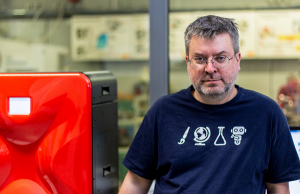3D Printing News Briefs: May 30, 2019
In today’s 3D Printing News Briefs, euspen plans to hold a Special Interest Group meeting in September centered around additive manufacturing, and an adjunct professor completed a comparison between a small SLS 3D printer and a large one. Moving on to interesting 3D printing projects, an artist teamed up with Mimaki to use full-color 3D printing to make a stage prop, a reddit user created an anti-cat button for an Xbox system, and an imgur user created a modular 3D printed fashion system.
euspen to Hold Special Interest Group Meeting on AM
 The European Society for Precision Engineering and Nanotechnology (euspen) will be addressing the factors which are influencing an uptake of the use of additive manufacturing as a production technology at a Special Interest Group (SIG) meeting in September. The meeting, which will be co-hosted by the American Society of Precision Engineering (ASPE), will analyze the barriers to, and the opportunities for, the adoption of AM in production. It will be held from September 16-18 at the École Centrale de Nantes in France.
The European Society for Precision Engineering and Nanotechnology (euspen) will be addressing the factors which are influencing an uptake of the use of additive manufacturing as a production technology at a Special Interest Group (SIG) meeting in September. The meeting, which will be co-hosted by the American Society of Precision Engineering (ASPE), will analyze the barriers to, and the opportunities for, the adoption of AM in production. It will be held from September 16-18 at the École Centrale de Nantes in France.
At the AM SIG meeting, issues that are, as euspen put it, “critical to the viability of AM as a production technology,” will be addressed. The co-chairs of the meeting are Professor Richard Leach from the University of Nottingham and Dr. John Taylor from the University of North Carolina at Charlotte. Local hosts and the organizing committee include Professor Alain Bernard from Centrale Nantes, Dr. David Bue Pedersen from the Technical University of Denmark, Professor Leach, and Dr. Taylor.
Comparison of Small and Large SLS 3D Printers
3D printers are often used in educational settings these days. Piotr Dudek, an adjunct professor at the AGH University of Science and Technology in Poland, runs a 3D printing lab at the school that both students and researchers frequent. While many technologies are used in the lab, SLS is the one that most interests Dudek, who decided to compare a big SLS system from EOS with the smaller Sinterit Lisa.
“We are using the big EOS SLS 3D printer for a long time and we wanted to compare it with Sinterit Lisa, check the possibilities of it. In SLS technology every detail matters. The temperature of the printing chamber, powder distribution system, heating or laser moving mechanism are very precise and important features. We wanted to test if Sinterit’s device is the valuable solution,” Dudek stated.
Larger 3D printers obviously have higher print volumes, but the down sides include difficult calibration, specialized training, and higher costs. In addition, it’s easy to mess up the calibration of a large 3D printer during transport. The Lisa 3D printer uses a gantry system, which comes pre-calibrated to save time, and it also uses less material, which means less money. The desktop printer is also much more student-friendly, making it the better choice for 3D printing labs like the one Professor Dudek runs.
Full-Color 3D Printed Stage Prop
 A few months ago, 3DPrint.com heard from 3D printing specialist and Post Digital Artist Taketo Kobayashi, from the Ultra Modelers community, about an art exhibit in Japan that he helped organize which featured colorful, 3D printed works created on the Mimaki 3DUJ-553 full-color 3D printer. Recently, he reached out to us again with news of his latest Mimaki Engineering collaboration – a stage prop for the Japanese artist Saori Kanda, who performed with techno/trance band Shpongle at the Red Rocks Amphitheater in Colorado.
A few months ago, 3DPrint.com heard from 3D printing specialist and Post Digital Artist Taketo Kobayashi, from the Ultra Modelers community, about an art exhibit in Japan that he helped organize which featured colorful, 3D printed works created on the Mimaki 3DUJ-553 full-color 3D printer. Recently, he reached out to us again with news of his latest Mimaki Engineering collaboration – a stage prop for the Japanese artist Saori Kanda, who performed with techno/trance band Shpongle at the Red Rocks Amphitheater in Colorado.
“It is a artwork,” Kobayashi told 3DPrint.com, “but also a utilization of full color 3D printing to entertainment field.”
The “Shpongle Mask,” which took 28 hours to print and mixed in Asian details, was worn onstage by Kanda as she performed her painting live with the band.
3D Printed Anti-Cat Xbox Button
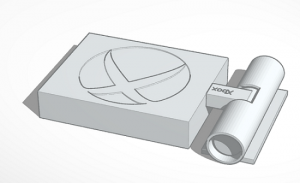 reddit user Mbiggz was getting sick of their cat turning off the touch-sensitive button on the Xbox console while it was in use, which I can understand, having two cats of my own. So Mbiggz came up with the perfect solution – a 3D printed cover for the button. The design can be found on the maker’s Tinkercad account, as Mbiggz originally made the design for a Digital 3D class.
reddit user Mbiggz was getting sick of their cat turning off the touch-sensitive button on the Xbox console while it was in use, which I can understand, having two cats of my own. So Mbiggz came up with the perfect solution – a 3D printed cover for the button. The design can be found on the maker’s Tinkercad account, as Mbiggz originally made the design for a Digital 3D class.
“Adhesive goes on the back part (it is labeled in the print). I’m a newcomer in terms of this so it’s not perfect,” Mbiggz wrote on Tinkercad. “Also, the door doesn’t open all the way, so you can fix it so that it does if you want to (even though it doesn’t really matter, there’s not really a need for it to open it all the way).”
3D Printed Modular Fashion System
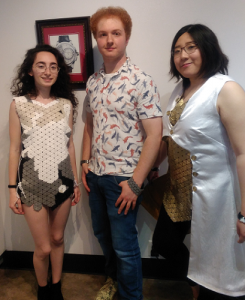 hunter62610, a young imgur user, designed and 3D printed a Lego-like modular fabric system, which was featured in his school’s fashion show. He made two dresses that are made with a 3D printed prototype fabric pattern called Escher, which was designed to be “put together and taken apart” hundreds of times. It took him just two weeks to make the material, which the two young ladies who modeled the dresses said was fairly comfortable.
hunter62610, a young imgur user, designed and 3D printed a Lego-like modular fabric system, which was featured in his school’s fashion show. He made two dresses that are made with a 3D printed prototype fabric pattern called Escher, which was designed to be “put together and taken apart” hundreds of times. It took him just two weeks to make the material, which the two young ladies who modeled the dresses said was fairly comfortable.
“The idea of the system is that theoretically, one could buy a fashion catalog filled with designs, and say 5000 links. Once could make every clothing item in the catalog, based on there needs. Perhaps that’s a pipe dream, but it’s a fun idea,” hunters62610 wrote.
“The Escher system is quite versatile. Each link acts like a free flowing Equilateral triangle, and has a male and female ball joint on each side. Every individual link is theoretically compatible with every other link. Special links are stored in the middle of this pouch that are really 3 merged links with a screw hole. If needed, these links can be used as elastic tie down points or buttons, if you screw in the buttons i made.”
A Makerbot Replicator Plus was used to print the fabric links in unique, small panels.
Discuss these stories and other 3D printing topics at 3DPrintBoard.com or share your thoughts in the Facebook comments below.
3D Printing News Sliced: Blue Origin, Digital Alloys, COBOD, 3D Hubs, Euspen, DTU
3D Printing News Briefs: April 21, 2019
We’re beginning with an aerospace 3D printing story in 3D Printing News Briefs today, then moving on to news about some upcoming industry events and finishing with a little business. Launcher tested its 3D printed rocket engine on an important date in history. DuPont will be introducing new semi-crystalline 3D printing products at RAPID + TCT, and Nanofabrica has offered to 3D print micro parts at no cost for interested companies attending the annual euspen conference. Ira Green Inc. used Rize technology to transform its production process, GOM is now part of the Zeiss Group, and the Ivaldi Group received its ISO 9001:2015 certification.
Launcher Tests 3D Printed Rocket Engine
 New York startup Launcher, which uses EOS technology to create 3D printed components for metal rocket engines, has completed many firing tests with these parts over the last year and a half. Recently, on the anniversary of the date the first human left Earth to go into space, the startup announced the results of the latest test.
New York startup Launcher, which uses EOS technology to create 3D printed components for metal rocket engines, has completed many firing tests with these parts over the last year and a half. Recently, on the anniversary of the date the first human left Earth to go into space, the startup announced the results of the latest test.
Launcher’s founder and CEO Max Haot posted on his LinkedIn account that the E-1 copper bi-metal rocket engine, which was 3D printed on the EOS M290, broke the startup’s combustion pressure record at 625 psi, mr 2.5. It will be interesting to see how the engine performs on its next test.
DuPont to Introduce New Semi-Crystalline Materials
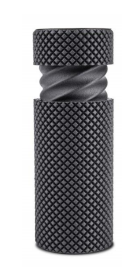 At next month’s RAPID + TCT in Detroit, DuPont Transportation & Advanced Polymers (T&AP), a DowDuPont Specialty Products Division business, will be launching an expansion to its 3D printing portfolio: advanced, high-performance semi-crystalline materials, which will give customers more manufacturing agility and open new opportunities to lower costs while increasing production.
At next month’s RAPID + TCT in Detroit, DuPont Transportation & Advanced Polymers (T&AP), a DowDuPont Specialty Products Division business, will be launching an expansion to its 3D printing portfolio: advanced, high-performance semi-crystalline materials, which will give customers more manufacturing agility and open new opportunities to lower costs while increasing production.
Jennifer L. Thompson, Ph.D., R&D programs manager for DuPont T&AP, will be presenting a technical paper about the materials during the event as part of the Material Development and Characterization session. During her presentation at 10:15 am on May 23rd, Thompson will discuss alternative 3D printing methods, like pellet extrusion modeling, in addition to highlighting new engineering materials and talking about tailored material testing programs. Thompson and other DuPont employees will be at DuPont T&AP’s booth #552 at RAPID to answer questions about the company’s 3D printing materials.
Nanofabrica Offers Free 3D Printing Services for euspen Attendees
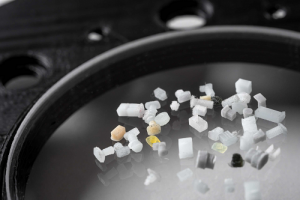 Last month, Israeli 3D printing startup Nanofabrica announced the commercial launch of its micro resolution 3D printing platform. In order to show off the system’s abilities to potential customers, Nanofabrica has made an enticing offer to attendees at next month’s euspen conference and exhibition in Spain: the startup will print parts for interested companies at no charge. Then, the parts printed on the new micro AM platform will be presented to them at the event, which focuses on the latest technological developments that are growing innovation at the micron and sub-micron levels.
Last month, Israeli 3D printing startup Nanofabrica announced the commercial launch of its micro resolution 3D printing platform. In order to show off the system’s abilities to potential customers, Nanofabrica has made an enticing offer to attendees at next month’s euspen conference and exhibition in Spain: the startup will print parts for interested companies at no charge. Then, the parts printed on the new micro AM platform will be presented to them at the event, which focuses on the latest technological developments that are growing innovation at the micron and sub-micron levels.
“It’s quite simple really. We believe that the best way to prove what our AM system can do, how high the resolution and accuracy of the parts we make are, is to manufacture parts for attendees,” Jon Donner, the CEO of Nanofabrica explained. “Registered attendees are welcome to send us their files, and we will examine and print them. That is how confident we are that you will be amazed by the capabilities of our system, and this we feel will mean that we can forge meaningful relationships with manufacturers that will endure into the future.”
Rize 3D Printing Transformed Company’s Production Process
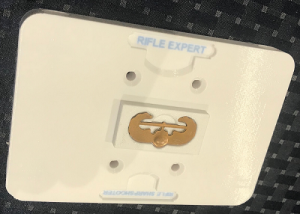 Rhode Island-based IRA Green Inc. (IGI), a full-service manufacturer and distributor of unique uniform items earned and worn by military personnel around the world, recently turned to RIZE and its 3D printing capabilities in order to manufacture small fixtures for its tool shop. The company’s products are in high demand, but lead times were growing longer due to bottlenecks and 8 hours of work for each $300 fixture. Precision is also important for these parts, which is why IGI decided to turn to the RIZE ONE hybrid 3D printer. According to a new case study, IGI’s design team uses the printer every day to manufacture accurate fixtures in just 50 minutes for $2.00 a part. Using the RIZE ONE, which has the unique capability of adding ink markings to parts for verification, the company has been able to standardize its nails and molds, which helped lead to an ROI in less than five months.
Rhode Island-based IRA Green Inc. (IGI), a full-service manufacturer and distributor of unique uniform items earned and worn by military personnel around the world, recently turned to RIZE and its 3D printing capabilities in order to manufacture small fixtures for its tool shop. The company’s products are in high demand, but lead times were growing longer due to bottlenecks and 8 hours of work for each $300 fixture. Precision is also important for these parts, which is why IGI decided to turn to the RIZE ONE hybrid 3D printer. According to a new case study, IGI’s design team uses the printer every day to manufacture accurate fixtures in just 50 minutes for $2.00 a part. Using the RIZE ONE, which has the unique capability of adding ink markings to parts for verification, the company has been able to standardize its nails and molds, which helped lead to an ROI in less than five months.
IGI’s Manufacturing Manager, Bill Yehle said, “Implementing RIZE 3D printing as part of a strategic process shift has completely transformed our production process.
“We have realized an 80% time savings in setup and changeover alone using RIZE and virtually eliminated errors.”
ZEISS Group Acquires GOM
 In an effort to expand its industrial metrology and quality assurance portfolio, the ZEISS Group, a technology enterprise operating in the optics and optoelectronics fields, has acquired GOM, which provides hardware and software for automated 3D coordinate measuring technology. By combining GOM’s optical 3D measuring technology with its own products, ZEISS could expand market access, and create new opportunities, for its Industrial Quality & Research segment. Once the transaction is complete, which should happen soon, GOM will become part of this ZEISS segment, while the legal form of its companies in Germany and elsewhere will stay the same. The financial details of the transaction will not be discussed publicly.
In an effort to expand its industrial metrology and quality assurance portfolio, the ZEISS Group, a technology enterprise operating in the optics and optoelectronics fields, has acquired GOM, which provides hardware and software for automated 3D coordinate measuring technology. By combining GOM’s optical 3D measuring technology with its own products, ZEISS could expand market access, and create new opportunities, for its Industrial Quality & Research segment. Once the transaction is complete, which should happen soon, GOM will become part of this ZEISS segment, while the legal form of its companies in Germany and elsewhere will stay the same. The financial details of the transaction will not be discussed publicly.
“Our growth strategy expressly mentions the targeted acquisition of highly innovative solutions, technologies and companies, which can reach their full potential as part of the ZEISS Group. By acquiring GOM and thereby expanding our solutions portfolio, we are bolstering the leading position of our Industrial Quality & Research segment and will be able to offer even better solutions for our customers. This is entirely in keeping with our corporate strategy, which is focused on our customers’ success,” said Dr. Michael Kaschke, President & CEO of ZEISS.
Ivaldi Group Awarded ISO 9001:2015 Certification
 California startup Ivaldi Group, which uses 3D printing and metal fabrication solutions to provide in-port parts on-demand services for the maritime, mining, offshore, and construction industries has become ISO 9001:2015 certified in less than ten months. This standard, which is certifies quality managements systems that focus on customer satisfaction, continuous improvement, and active involvement of employees and management in a process-based approach, is the first step in the certification process that’s required to certify specific products. This proves Ivaldi’s commitment to constantly improving itself.
California startup Ivaldi Group, which uses 3D printing and metal fabrication solutions to provide in-port parts on-demand services for the maritime, mining, offshore, and construction industries has become ISO 9001:2015 certified in less than ten months. This standard, which is certifies quality managements systems that focus on customer satisfaction, continuous improvement, and active involvement of employees and management in a process-based approach, is the first step in the certification process that’s required to certify specific products. This proves Ivaldi’s commitment to constantly improving itself.
“Certifying our quality management system has helped us to structure our processes to create a solid foundation. This will allow us to improve efficiency, productivity, and traceability,” said Anna D’Alessio, Quality Management Specialist of Ivaldi Group. “Global quality management systems are important to align processes and optimize operations across facilities. This certification proves our commitment to meet requirements of stakeholders affected by our work.”
Discuss these stories and other 3D printing topics at 3DPrintBoard.com or share your thoughts in the Facebook comments below.

